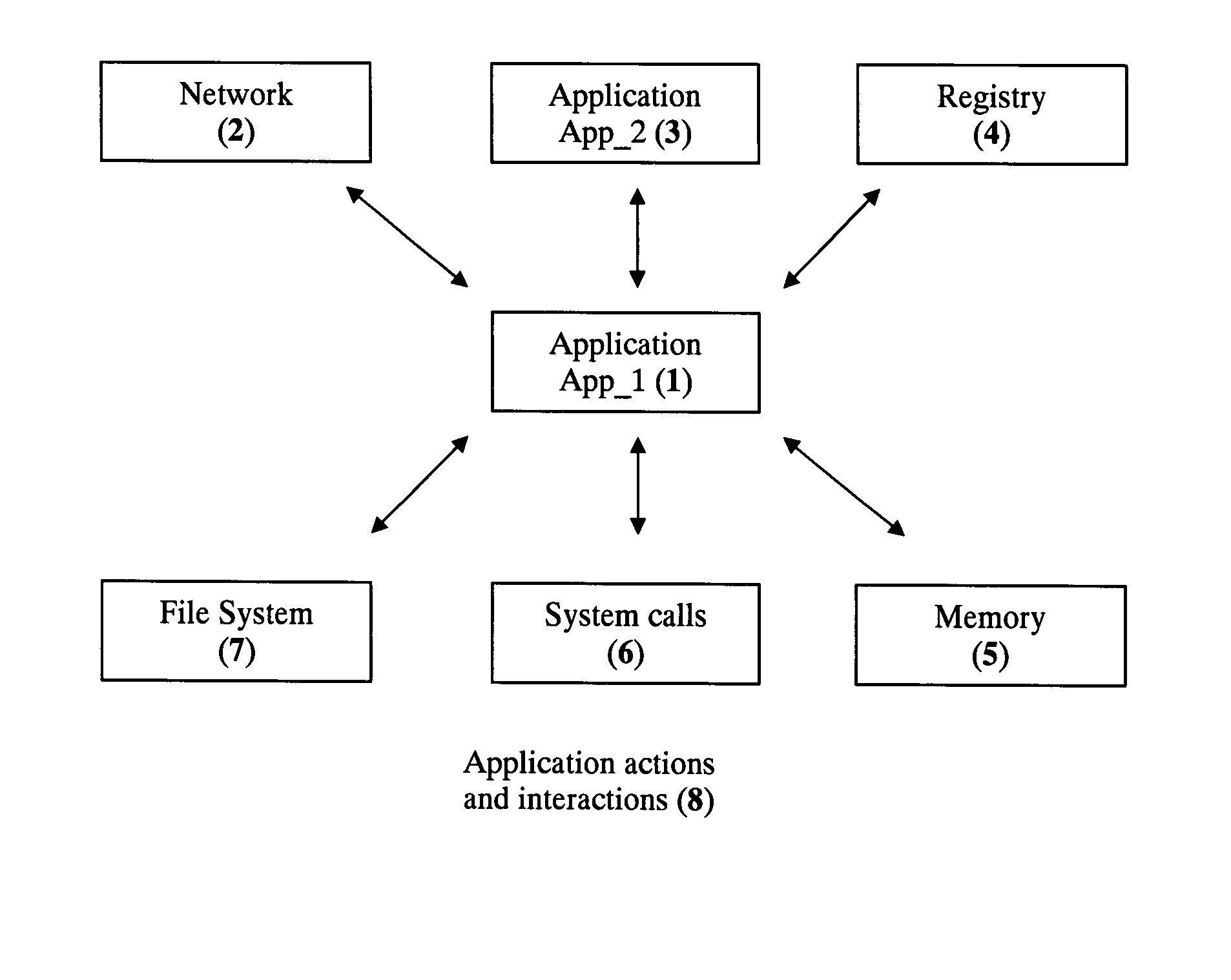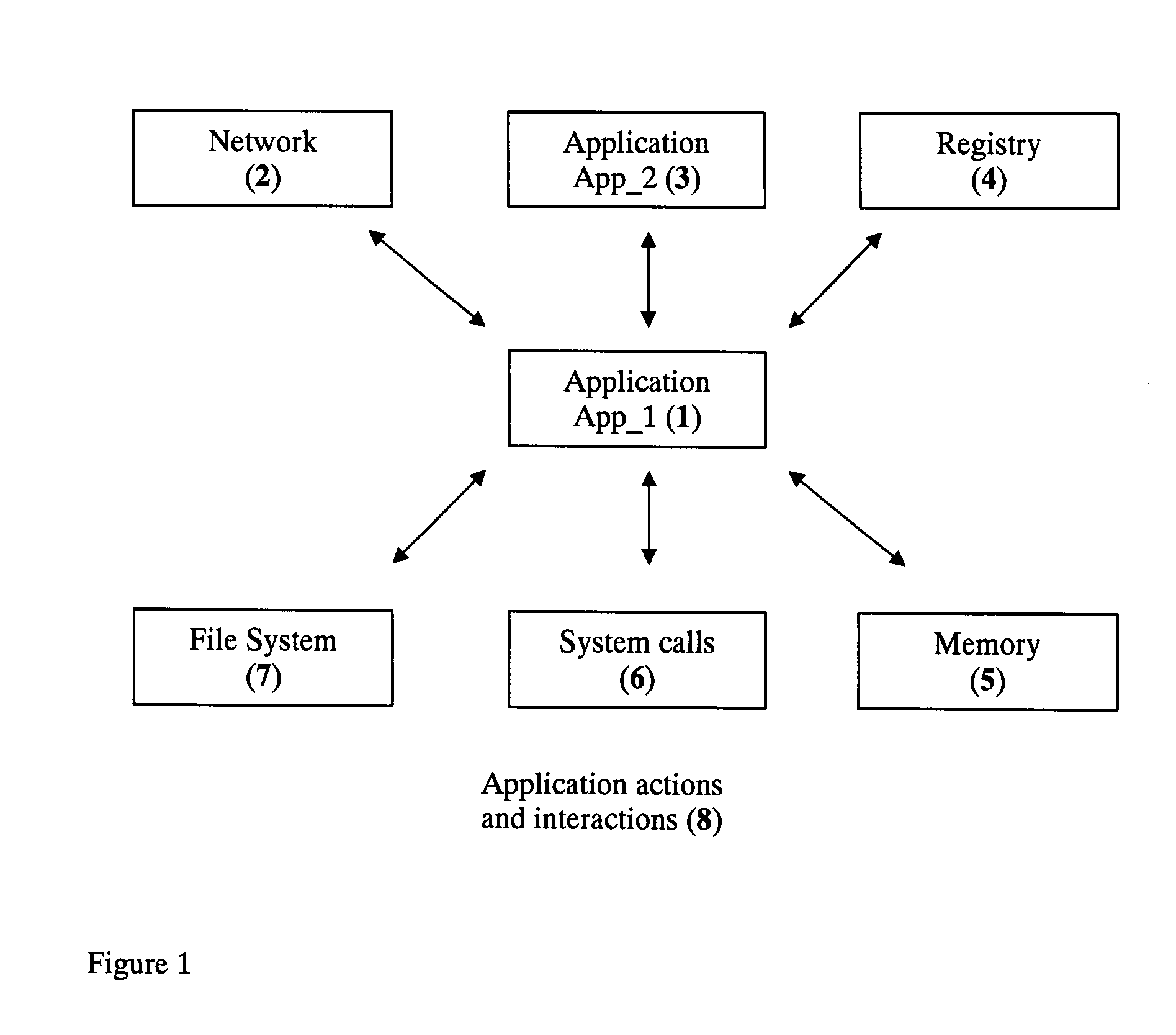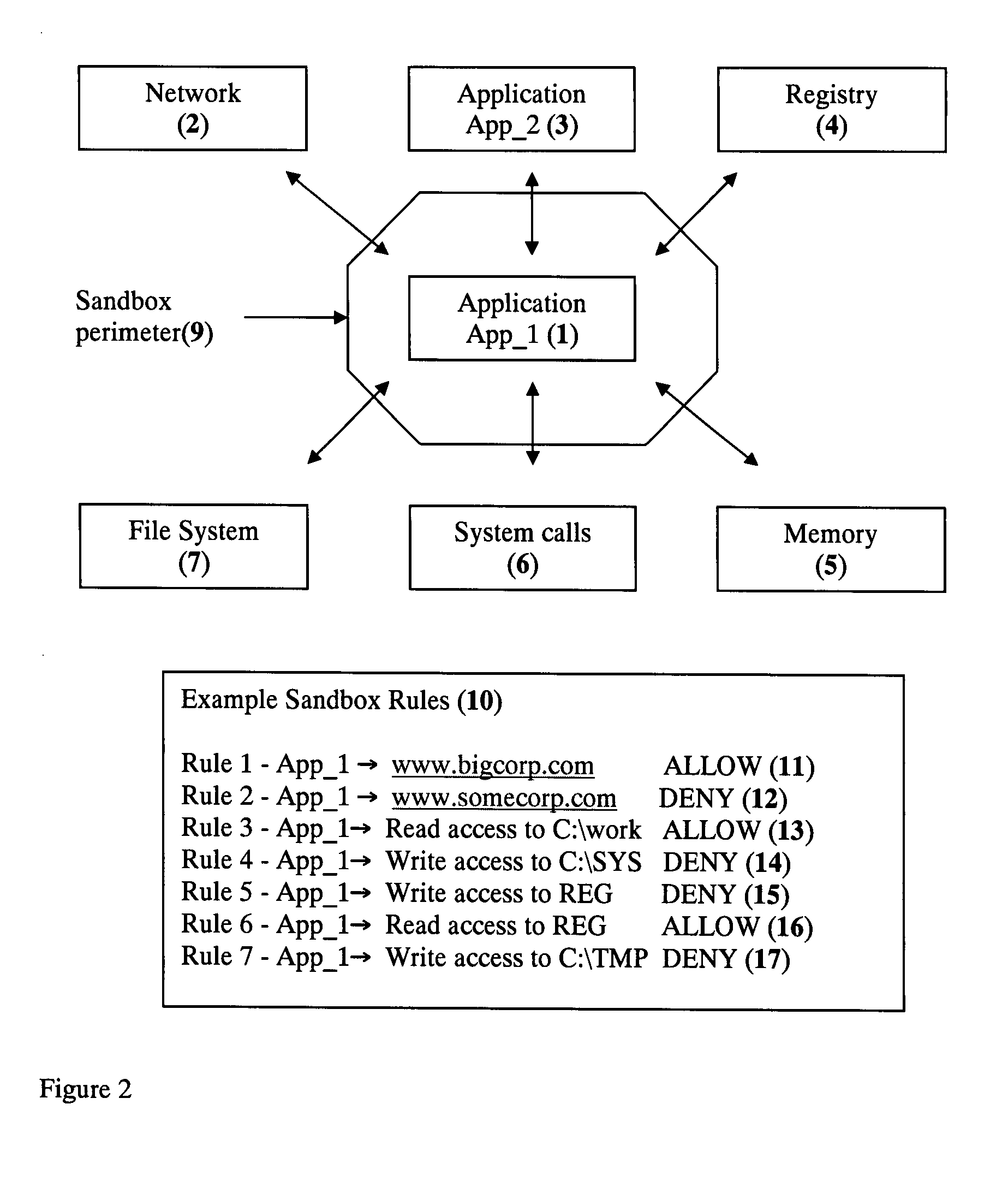Application Sandbox to Detect, Remove, and Prevent Malware
a malware and application sandbox technology, applied in the field of application sandbox to detect, remove, and prevent malware, can solve the problems of difficult to defend against these attacks, attacks that go mostly undetected, and approach is very difficult for real-time applications such as web browsers and im clients, so as to limit or eliminate attacks, remove or neutralize malware on disk and in memory
- Summary
- Abstract
- Description
- Claims
- Application Information
AI Technical Summary
Benefits of technology
Problems solved by technology
Method used
Image
Examples
Embodiment Construction
[0031] In the following paragraphs, the present invention will be described in detail by way of example with reference to the attached drawings. While this invention is capable of embodiment in many different forms, there is shown in the drawings and will herein be described in detail specific embodiments, with the understanding that the present disclosure is to be considered as an example of the principles of the invention and not intended to limit the invention to the specific embodiments shown and described. That is, throughout this description, the embodiments and examples shown should be considered as exemplars, rather than as limitations on the present invention. Descriptions of well known components, methods and / or processing techniques are omitted so as to not unnecessarily obscure the invention. As used herein, the “present invention” refers to any one of the embodiments of the invention described herein, and any equivalents. Furthermore, reference to various feature(s) of ...
PUM
 Login to View More
Login to View More Abstract
Description
Claims
Application Information
 Login to View More
Login to View More - R&D
- Intellectual Property
- Life Sciences
- Materials
- Tech Scout
- Unparalleled Data Quality
- Higher Quality Content
- 60% Fewer Hallucinations
Browse by: Latest US Patents, China's latest patents, Technical Efficacy Thesaurus, Application Domain, Technology Topic, Popular Technical Reports.
© 2025 PatSnap. All rights reserved.Legal|Privacy policy|Modern Slavery Act Transparency Statement|Sitemap|About US| Contact US: help@patsnap.com



